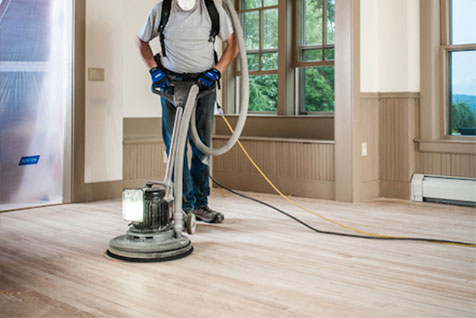Liquid Screed Company in Reading – There is no rule which says that you have to lay a floor screed when you are building a home, or any other sort of building for that matter. However, there are advantages to doing so even if you are not installing underfloor heating. If you are installing underfloor heating, there is the choice between electric and water-based heating systems.
With a water-based, or hydronic, heating system it will be necessary to lay a floor screed in any case, in order to cover and fully encapsulate the heating pipes through which the heated water runs. With certain types of electric underfloor heating, it is possible to lay the heating cables or heating mat within the layer of adhesive if a tile or stone floor is being fitted, but with other types of floor finish, a layer of screed will still be needed upon which to lay the flooring.
Even if underfloor heating is not being installed, it is still always advisable to use a floor screed, since you want the floor to be as flat and level as possible, so you do not want to lay it directly on concrete.
There are two different types of screed. Traditionally, a floor screed was made using sand and cement in a ratio of 1:3 to 1:4.5 of cement to sharp sand. This was mixed in a concrete mixer on site and then troweled into position on the substrate by a worker on hands and knees. One disadvantage of this is that since every batch was mixed by loading the sand and cement into the mixer, it was difficult to ensure anything like consistency with each batch. For this reason, on larger contracts today, the screed is delivered to site pre-mixed.
Even so, there are problems laying a sand and cement screed, particularly when laying over a water-based underfloor heating system. This is because it is almost impossible to fully enclose all of the heating pipes, so there are often voids or gaps. The result of that is that the heat transfer into the room will be uneven where the gaps exist.
Another issue is what is known as the surface regularity of the screed. This refers to the measure of waviness of the surface of the screed and it is measured by laying a two-metre straightedge on the screed and measuring any gaps with a slip gauge. British Standards refer to the level of flatness achieved as SR1 (Surface Regularity 1), SR2, and SR3. To achieve SR1, the maximum gap under the straightedge must not exceed 3mm. For SR2 it is 5mm, and for SR3 it is 10mm. They are referred to as High Standard, Normal Standard, and Utility Standard. When using a sand and cement screed, it will not usually be any better than Utility Standard – SR3.
However, over the last 20 years or so, we have had a different type of screed introduced that has rapidly become more popular because of the many benefits it has. This is known as a liquid screed, and it consists of sand with calcium sulphate as the binder instead of cement. This type of screed is known by various names such as anhydrite screed – the calcium sulphate being anhydrous, or dry, which becomes gypsum when mixed with water. It is also known as gypsum screed, calcium sulphate screed, flowing screed, self-levelling screed, and so on, but all refer to the same product.
A liquid screed is delivered to the site premixed and is then pumped into position on the substrate using a pump and long hose. As you might imagine, this is far faster than laying a screed on your hands and knees with a trowel, and it can be as much as 20 times as fast. In fact, a liquid screed company in Reading, or for that matter anywhere else, could lay as much as 2,000 square metres in a day.
Most importantly, a liquid screed used in conjunction with water-based underfloor heating will fully cover and envelop all the pipes because of the fact that it is liquid. So, there are no gaps or voids, and the heat in the room is completely even. Better still, the thermal conductivity of liquid screed is almost twice that of sand and cement, so less energy is required to achieve the same temperature in the room. On top of that, a liquid screed can be laid far more thinly than sand and cement, which again results in less energy to achieve the desired room temperature.
In addition, a liquid screed will be dry enough to walk on in as little as 24 hours, and no more than 48 hours, which means that other trades who need to work on the site are not unduly delayed.

